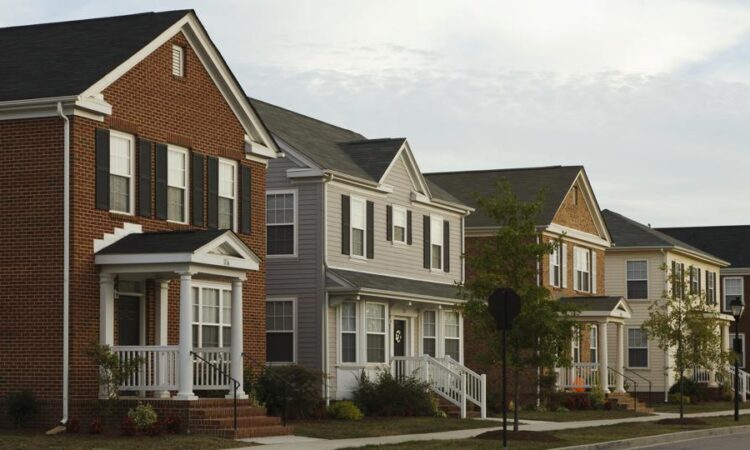
Editorial Note: We earn a commission from partner links on Forbes Advisor. Commissions do not affect our editors’ opinions or evaluations.
Find out if a 30-year fixed-rate mortgage is the right type of home loan for you and compare current rates for 30-year mortgages.
Current 30-Year Mortgage Rates
Today’s average rate on a 30-year fixed mortgage is 6.91% compared to the 7.33% average rate a week earlier.
The 52-week high for a 30-year fixed mortgage was 7.41% and the 52-week low was 5.99%.
What is a 30-Year Fixed Mortgage?
A 30-year mortgage is a home loan that lets you repay your lender over 30 years—typically the longest repayment period a lender will allow and the most popular mortgage product. A 30-year, fixed-rate mortgage has an interest rate that never changes over the life of the loan.
Allowing borrowers to take 30 years to pay back a loan at a fixed rate makes homeownership much more attainable. Also, you always have the option to pay more toward your principal if you’re able to in a particular month or year. That can reduce the overall amount of interest you pay over the life of the loan.
Related: How To Pay Off Your Mortgage Early
Still, there are some downsides to a 30-year mortgage. By taking a longer period of time to repay your mortgage, you’ll pay more in interest costs. There are other mortgage products that have shorter terms, like 15 and 20 years. You can compare costs using a 15-year vs. 30-year mortgage calculator as an example.
How to Apply for a 30-Year Mortgage
Before you apply for a mortgage, review your credit profile and make any necessary improvements. To qualify for the lowest interest rate, your credit should be as strong as possible.
Then, calculate how much home you can afford, including how much of a down payment you can make. Part of this initial process should include shopping around for lenders to get an idea of rates and products that best fit you.
Mortgages are available through banks, credit unions and many online lenders. Find out what rates each lender is offering as well as the annual percentage rate (APR)—the total cost of a loan, including fees.
Related: Best Mortgage Lenders
When you’re ready to apply for a mortgage, compile all necessary documentation like income verification, recent bank account statements and other proof of assets.
You can start the application process by seeking a preapproval letter from the mortgage lender. This letter will give you an estimate of your specific loan rate and terms, if you qualify. It also helps establish exactly how much home you can afford and gives you more negotiating power with sellers when you have a letter showing you are already approved for financing.
How to Get the Best 30-Year Mortgage Rates
Studies have shown that borrowers who comparison shop get better rates than those who go with the first lender they find. Financial experts recommend getting quotes from at least three different lenders. You may also want to consult a mortgage broker, who will shop around on your behalf.
If your credit profile isn’t strong enough for you to get the best mortgage rate possible, financial experts at your current bank, a housing counseling organization or a good mortgage broker can help offer tips on how to improve your score.
15-Year vs. 30-Year Mortgages
Getting a 15-year mortgage instead of a 30-year mortgage means you’re paying off the house in half the time. However, a 15-year mortgage typically has higher monthly payments because you’re paying down the loan more quickly. Rates on a 15-year mortgage tend to be slightly less than a 30-year mortgage.
Today’s average fixed rate for a 15-year mortgage is 6.23% compared to the average of 6.50% a week earlier.
If you have the means to make higher monthly mortgage payments, a 15-year mortgage might be a better option for you. In contrast, a 30-year mortgage might be better for someone who has a more limited budget or who wants to be able to save cash while making mortgage payments at the same time.
Keep in mind, even if you have the means to get a 15-year mortgage but choose a 30-year mortgage instead, you can always pay extra principal, either by making biweekly payments or lump-sum payments whenever you have the means. And you can always refinance into a shorter term mortgage.
Faster, easier mortgage lending
Check your rates today with Better Mortgage.
Frequently Asked Questions (FAQs)
Why are 30-year mortgages so popular?
A 30-year, fixed-rate mortgage is the most popular home purchase financial product because it’s often more affordable than other shorter-term mortgage loans. That gives homeowners a little more wiggle room in their budget, while keeping the certainty that the monthly payment will never change.
It also gives the borrower a longer window to decide whether they want to sell down the road and pay off the mortgage. They also have the option to refinance into a shorter term loan or one with a lower interest rate if rates drop.
Is a 30-year mortgage right for me?
A 30-year mortgage might be the right choice for you if a 15-year mortgage is out of your budget or if you’d like to be able to save some cash while making mortgage payments at the same time.
A mortgage calculator can help you run the numbers, and a trusted professional like a mortgage broker or loan officer can help advise you.
What are the advantages of a 30-year mortgage?
The biggest advantage to a 30-year mortgage is the ability to spread loan payments out over the maximum amount of time. That keeps the monthly payment much more affordable and makes homeownership accessible to more people.
Another advantage is that paying more in interest can help you make a bigger tax deduction, if you itemize your deductions.






